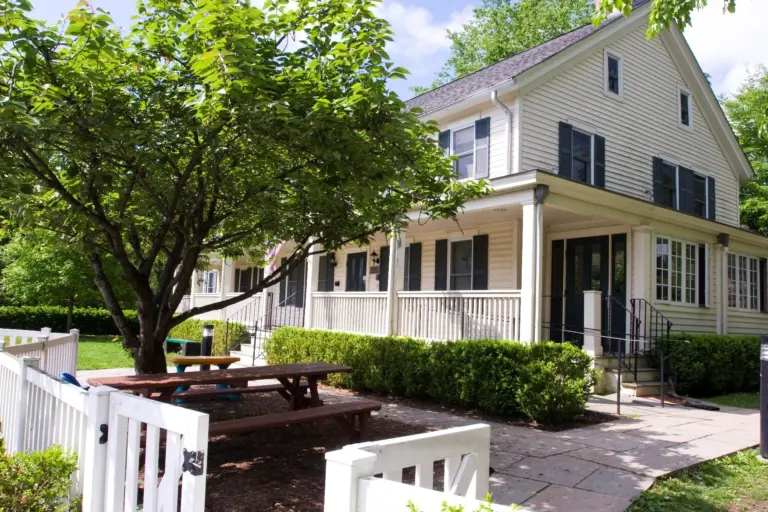
Impressive Outreach in Fairfield County
By Anne W. Semmes
Sentinel Features Reporter

Every weekday across Fairfield County, hundreds of adults and children are served at soup kitchens, hundreds of others are coached toward literacy, and a thousand underprivileged children are educated at elementary schools with an “academically rigorous learning environment.” Hundreds of high schoolers, with the help of scholarships, are likewise helped on the path to graduation.
Tally these numbers over 25 years and you begin to see the effect of a unique idea called the Inner-City Foundation For Charity & Education, thought up by a couple of altruistic businessmen with a large presence in Fairfield County; Greenwich’s Bob Ix, who led Cadbury Schweppes; and John Carter, of Equitable Life Insurance.
“Their idea was to raise money from corporations to fund nonprofits serving needy people,” said Richard “Rich” Stone, the Foundation’s executive director and its only full-time paid employee these last 20 years.
Stone administered nearly a million dollars last year in grants to 50 organizations. Overall, corporations and individuals have provided $27 million in grants over the last 25 years.
“Most of our funding goes to programs operated in the cities of Bridgeport, Norwalk, Stamford, and Danbury, but programs in smaller towns also receive funding,” Stone said.
In Greenwich, Kids in Crisis as well as the YWCA Domestic Abuse Program receive Inner-City Foundation support.
Westport-based Bill Mitchell, of the legendary Mitchell retail enterprise, was an early board member. He remembers well the day he was recruited 20 years ago:
“Three powerful women, Jane Welch, wife of Jack Welch, CEO of GE; Suzanne Wright, wife of Bob Wright, then president/CEO of NBC; and Pat Willett; all members of the Inner-City Foundation, walked into Mitchells Store in Westport and asked me if I would become a member of Inner City.”
Mitchell knew nothing of the Foundation, but woman power won him over. “It would have been easier to say no to their three husbands,” he said. “As it turned out, I have loved every minute of my involvement in the organization.”
Mitchell joined a hands-on non-profit with a working board today of 28 members. Their work, Mitchell said, is simply to “go out and do the legwork,” to ferret out the most efficient and proven programs with the strongest potential to effectively serve needy populations.
“When one goes to these agencies and sees the need for education and social needs, one really understands how important the work of the Inner-City Foundation is,” Mitchell said.
Stone spelled out how the Foundation’s unique vetting system works: “Our members are attorneys, bankers, financial executives, retailers, marketers, business owners. They serve on one of three different committees: Education, Social Initiatives, and the Program Support Committee. The Education Committee reviews grants for programs teaching reading, writing, and arithmetic. The Social Initiatives Committee reviews grants for soup kitchens, shelters, counseling programs. They are looking for the most efficient programs.”

Assigned committee members then “go out to the grantee program sites to do their due diligence, come back and report to their committee with a suggested recommendation,” Stone said. “The committee then votes. Their recommendation then goes to the Program Support Committee for further review with the chairs of the Education and the Social Committees, with their final recommendation presented to the Foundation board.”
The average time to approve and fund an application is six months. “But it can be sooner,” said Stone. “With this thorough vetting process, we are getting the biggest bang for our dollars as we don’t have enough funds to give everything these applications are looking for.”
Stone cited new challenges in finding funding.
“For the last couple of years, a lot of government funding has been eliminated,” he noted. “GE supported a lot of nonprofits and is now leaving Connecticut. Agencies have to deal with a lot more clients than before. The Mercy Learning Center in Bridgeport has an adult literacy program for women and their children. Six years ago they were handling 400; now it’s 800. They are busting at their seams.
“There’s more unemployment, a higher number of low-income people, and a higher cost of living in Fairfield County. There are a lot more children coming from families in dire straits. We’re seeing a lot of new organizations coming to us. We’re seeing more people who need our services, more domestic-violence-victim counseling needs.”
“People are giving money to feed people in Africa when there are children standing in line for dinner 30 miles up the road,” said board member and Greenwich resident Helen Ix FitzPatrick.
FitzPatrick is a marketing entrepreneur who has followed in the Foundation footsteps of her dad, Bob Ix. With all of the good works of the Foundation, she regrets “not enough people know about us!”
“There’s more need in Fairfield County than most people know,” agreed board member Dick Matteis of Greenwich, a retired executive of J. P. Morgan Chase. “It’s everyone’s responsibility to give back to their communities.” He added: “I was educated in the Jesuit tradition which values serving others.”
“It seems to me that our Judeo-Christian heritage preaches that,” echoed Bill Mitchell. “Many of us are very fortunate to be living in Fairfield County, but there are those living here who need our help.”
Both Matteis and Mitchell cited benefits that come from doing legwork for the Foundation board. “I get to see the needs in our community,” said Matteis. “It keeps me grounded in what’s important in life. It’s wonderful to see people overcome many obstacles and get the right guidance to lead a successful life.”
“The feeling of giving back and making a difference is like no other,” said Mitchell. “The Mitchell family – and we are involved in Greenwich and Westport – believes bone-deep that our culture is to give back and make a difference and the Inner-City Foundation is an example of all our involvement in the organization. It is a privilege to serve on the Inner-City board.”




